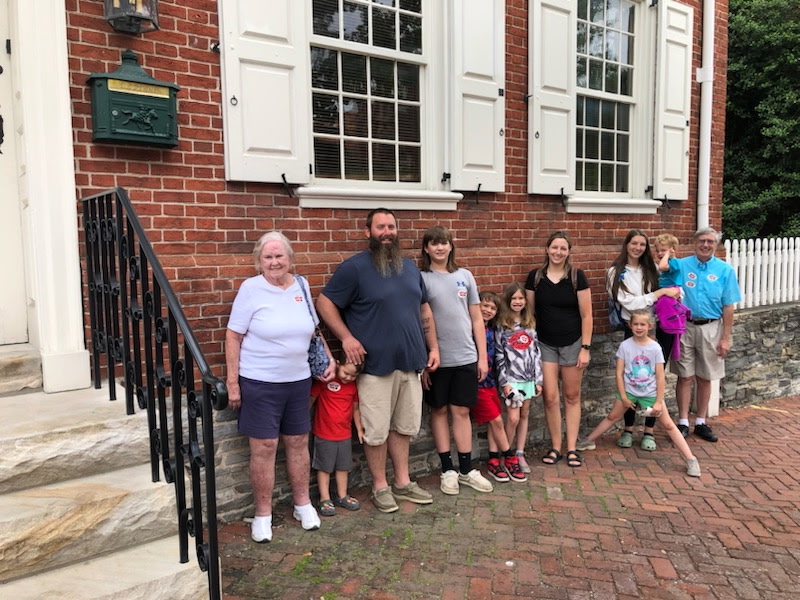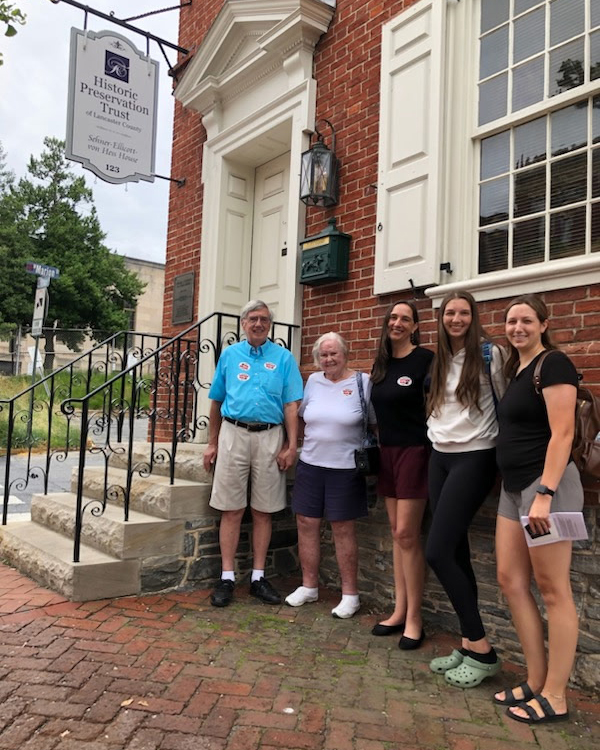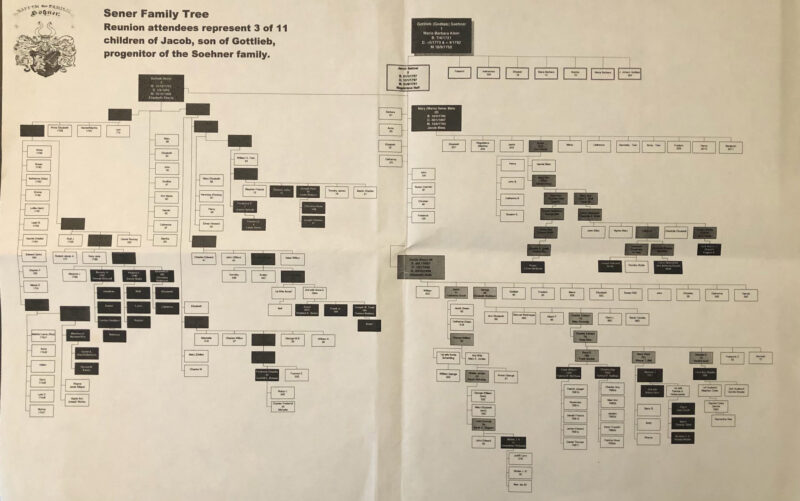When History Comes Home: Descendants of Gottlieb Sehner Visit the Historic Trust Headquarters
In June, the Historic Preservation Trust of Lancaster County welcomed some very special guests through the doors of our headquarters on North Prince Street—four generations of descendants of Gottlieb Sehner II, the original builder of the house we now call home.

Standing proudly in front of the house their ancestor built over two centuries ago, the Sehner family celebrates a remarkable legacy of craftsmanship and history.
It was a moment that felt like history folding back on itself. For the first time in recent memory, the direct descendants of the man who constructed this stately Georgian townhouse between 1787 and 1789 returned to the very place their ancestor once lived, worked, and raised a family. So many generations removed, their visit was a touching reminder of the deep roots that continue to bind people to Lancaster’s rich architectural past.

Built by master carpenter and second-generation Lancasterian Gottlieb Sehner, this 2.5-story brick home remains one of the city’s finest examples of Georgian architecture. With its distinctive keystones above the windows, triangular pediment crowning the door, belt course, and a raised water table designed to protect the foundation, the house showcases the craftsmanship and care of a builder dedicated to both form and function.

Sehner family tree
Gottlieb Sehner lived here with his wife Sabina, his widowed mother, his unmarried brother, and as many as six children. Despite his skill and reputation, Sehner died in 1799 with outstanding debts, prompting Sabina to rent the property to help support the family. That decision brought another historic figure into the home—Major Andrew Ellicott.
Ellicott, appointed Secretary of the State Land Office by Pennsylvania’s first governor, Thomas Mifflin, lived at 123 North Prince Street from 1801 to 1813. During that time, he was instrumental in completing the survey plans for Washington, D.C., mapping the northern boundary of Pennsylvania, and training a young Meriwether Lewis in the art of surveying for what would become the famed Lewis and Clark Expedition. In fact, Lewis spent several weeks under Ellicott’s instruction here in this very house.
Over the years, this storied residence has survived more than two centuries of change—including multiple threats of demolition. In 1962, urban renewal efforts nearly erased it from the landscape to make way for a parking garage. Outcry from local preservationists sparked a movement that ultimately led to the founding of the Historic Preservation Trust of Lancaster County.
Thanks to those early advocates, the home was listed on the National Register of Historic Places in 1972 and carefully restored to its original late 18th-century appearance. Today, it stands proudly as the Sehner-Ellicott-von Hess House, the beating heart of the Trust’s mission to preserve Lancaster County’s architectural heritage.
To have members of the Sehner family stand once again at the threshold of their ancestral home was more than symbolic—it was a celebration of legacy. It’s moments like these that remind us why preservation matters. Buildings aren’t just brick and mortar. They are vessels of memory, identity, and connection.
We were honored to share stories, photos, and laughter with the Sehner descendants during their visit. Their presence brought renewed life to the home and affirmed the work the Trust does every day to keep history alive for future generations.
📅 Want to visit the Sehner-Ellicott-von Hess House yourself? Join us during our monthly open houses on First Fridays. There’s no better way to experience Lancaster’s living history.





